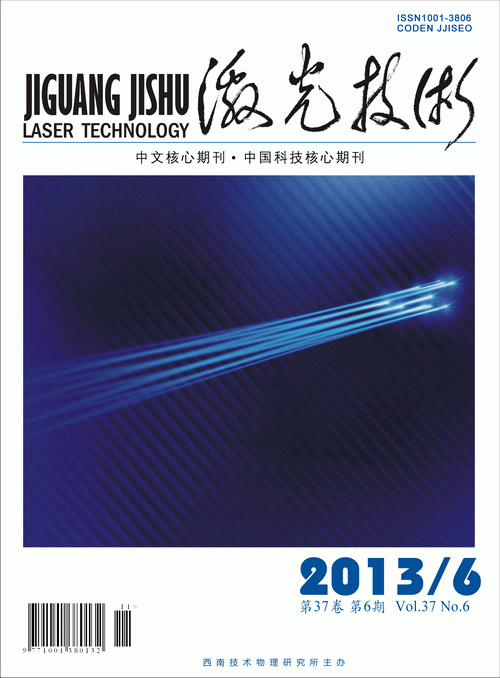Finite element simulation and experimental study about laser micro-joining between biopolymer and metal
-
1.
School of Electromechanical Engineering, Guangdong University of Technology, Guangzhou 510006, China
-
Corresponding author:
GUO Zhong-ning, znguo@gdut.edu.cn
;
-
Received Date:
2013-02-18
Accepted Date:
2013-04-28
-
Abstract
In order to understand the laser micro-joining mechanism better, based on the ANSYS, finite element simulation software, the Gaussian heat source model was adopted to simulate the dynamic temperature filed in the process of welding polyethylene terephthalate (PET) and biomedical Ti. The transition highest peak temperature variation during the process of welding was recorded with a thermal infrared imager and the actual welding seam width was measured with a digital microscope in super depth of field. The simulation results are conforming to the experimental results. Simulation result suggests that the isotherm is as an ellipse. Meanwhile, there is intensive isotherm and larger temperature gradient in the front of the spot center, on the contrary, sparser isotherm and smaller temperature gradient at the back of the spot center, which verifies the applicability of the model established by moving heat source during the laser welding based on PET/Ti sheets applying to the temperature field simulation.
-

-
References
|
[1]
|
ZHOU Y. Microjoing and nanojoining[M].Beijing: China Machine Press, 2010: 2-6(in Chinese). |
|
[2]
|
FARAZILA Y, MIYASHITA Y, HUA W, et al.YAG laser spot welding of pet and metallic materials[J]. Laser Micro/Nanoengineering, 2011,6(1): 69-74. |
|
[3]
|
AUDRONIS M, HINDER S J.A comparison of reactive plasma pre-treatments on PET substrates by Cu and Ti pulsed-DC and HIPIMS discharges[J]. Thin Solid Films, 2011,520(5): 1564-1570. |
|
[4]
|
WU Y D, GUO A H.The development and research status of biomedical Ti alloys[J]. Development and Application of Materials, 2010, 25(2):81-85 (in Chinese). |
|
[5]
|
GOWER H L, PIETERS R G M.Pulse laser welding of metal-polymer sandwich materials using pulse shaping[J].Laser Applications, 2006,18(1):35-41. |
|
[6]
|
WANG X P. Laser transmission joint between PET and titanium for biomedical application[J]. Materials Processing Technology, 2010, 210(13):1761-1771. |
|
[7]
|
WANG X, SONG X, JIANG M, et al. Modeling and optimization of laser transmission joining process between PET and 316L stainless steel using response surface methodology[J].Optics and Laser Technology,2012, 44(3): 656-663. |
|
[8]
|
TILLMANN W, ELREFAEY A, WOJARSKI L. Toward process optimization in laser welding of metal to polymer[J]. Materialwissenschaft und Werkstofftechnik, 2010, 41(10):879-883. |
|
[9]
|
WAHBA M, KAWAHITO Y, KATAYAMA S. Laser direct joining of AZ91D thixomolded Mg alloy and amorphous polyethylene terephthalate[J]. Journal of Materials Processing Technology, 2011, 211(6): 1166-1174. |
|
[10]
|
LU Y, ZHANG J. Modeling and simulation of laser welding for aluminum alloy[J]. Hot Working Technology, 2012, 41(1):130-133 (in Chinese). |
|
[11]
|
CAO D D, WANG K Sh, YANG Y N. Finite element simulation of temperature field ofthin tubes irradiated by ring lasers[J]. Laser Technology, 2010, 34(6): 753-756 (in Chinese). |
|
[12]
|
QI L J, ZHU X, ZHU Ch H. Numerical simulation and experiment research of laserdamage of porcelain insulator surface[J]. Laser Technology, 2011, 35(6):844-849 (in Chinese). |
|
[13]
|
HU M Y, SHI J W. Effect of aluminum alloy surface absorptivity on weld shape[J].Hot Working Technology, 2009, 38(21): 150-151(in Chinese). |
|
[14]
|
WU Ch S. Welding thermal process and molten pool form[M].Beijing: China Machine Press, 2007: 56-68 (in Chinese). |
|
[15]
|
CHEN Y B. Modern laser welding technology[M]. Beijing: China Science and Technology Press, 2005: 35-39 (in Chinese). |
-
-
Proportional views

-

 Map
Map



 DownLoad:
DownLoad: